Pan Am Catering Items
The 1970s "Gold Rim" Pattern
The 1970s "Gold Rim" Pattern
In the early 1970s along with the introduction of the 747s Pan Am introduced a new Noritake "Gold Rim" pattern. Initially all the plates were made by Noritake in Japan. Noritake then began production of airline china in the Philippines. At some point Pan Am discontinued using Noritake for the gold pattern and switched to German china manufacturer Bauscher Weiden. All plates & cups are back stamped indicating from which era they were produced. Below are samples of the three back stamps.
The Noritake production offered a dinner plate, salad & dessert plate and bread plate shown stacked in the center of the picture below. Additionally, Noritake produced the fruit bowl without handles as well as the coffee cup, saucer and small sake cup to the immediate left of the coffee cup & saucer (more on coffee cups below).
The soup bowl with handles as well as the condiment cup (to the right of the fruit bowl without handles) and the casserole dish (standing in the center) were only produced by Bauscher Weiden.
A new style of square bottom flatware was also introduced at that time. Initially the new flatware was produced by "International Silver Co." and was all silver plate. Towards the end of the production other flatware manufacturers were used and the flatware was transitioned to stainless steel. As with the 1960s flatware pattern this style too only had one size fork.
In the picture below the tall cup on the left is the original Gold Rim coffee cup produced by Noritake Japan. The center cup is shorter and slightly wider. This version was produced by Noritake Philippines and Bauscher Weiden. On the right is a Pan Am mug. Traditionally Pan Am had never offered "mug" style cups to passengers. This changed temporarily in 1980 with the Pan Am - National Airlines merger. As the National Airlines aircraft galleys and trays were sized for mugs Pan Am had no choice but to order mugs (with a Pan Am "gold rim look") until a fleet retrofit could be completed and the Pan Am coffee cup offered system wide.
During the 1970s Pan Am featured several different types of glassware for First Class customers. In the first picture below the logos are very large. This series offered a mini carafe used for orange juice or syrup on breakfast flights. In the second set of glasses below the logo appears at the bottom of the glasses. The glasses shown in the third photo have a solid bottom. The style was used the 1971-5 time period. Shown left to right is the wine, rock and cordial glass.
To celebrate the company’s 50th Anniversary Pan Am issued special wine & rock glasses in 1977. The tumbler was used throughout the year while the wine glass was only offered on a special commemorative flight around the world on October 28, 1977.
To keep first class customers entertained on long flights Pan Am designed much of the meal service to be offered from carts. Customers could always count on seeing an Hors d’oeuvres cart, salad cart, roast beef cart (for those who ordered it as an entrée) and a cheese and dessert cart. Pictured below is an Hors d’oeuvres cart from the early 1980s featuring the gold rim pattern. The silver bowl used for caviar in the picture can be seen close up on the right. The bowl was also used for fruit and certain desserts. Manufactured by the Grand Silver Co as part of their “Wearbrite” collection it is made of nikel sliver / silver solderer and stands 4 inches tall with an 8 1/4 inches in diameter. This bowl is slightly smaller than the silver bowls shown above with the 1950s Script pattern. Below this first picture is a second picture showing the two different size bowls side by side. On the left the larger bowl that was used from the late 1950s to the early 1970s. On the right is the smaller bowl used from the 1970s until 1991.
The famous Pan Am roast beef cart was always accompanied by a large rectangle pan offering two vegetables, usually some form of a potato and a green vegetable. The vegetable pan had a bottom and top. Boiling water was placed in the bottom to keep the vegetables in the top warm for the few minutes that the cart was in the aisle. Below on the left is a picture of the roast cart from 1978. By then the vegetable pan was stainless steel. On the right is a silver plate bottom pan most likely produced in the 1960s. It was made by the International Silver Co. and measures 13in long, 10 ½ in wide and 2 ½ in deep.

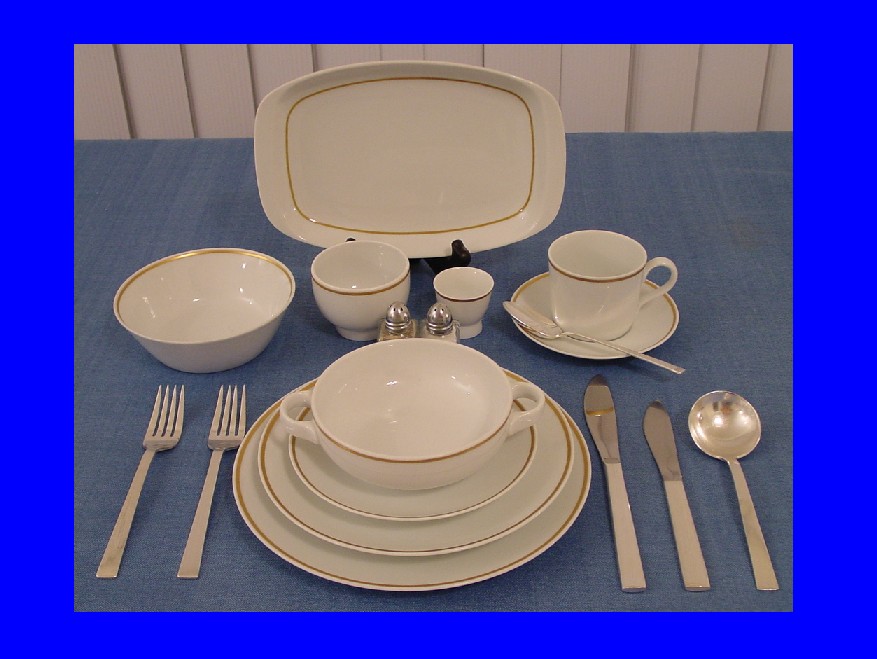
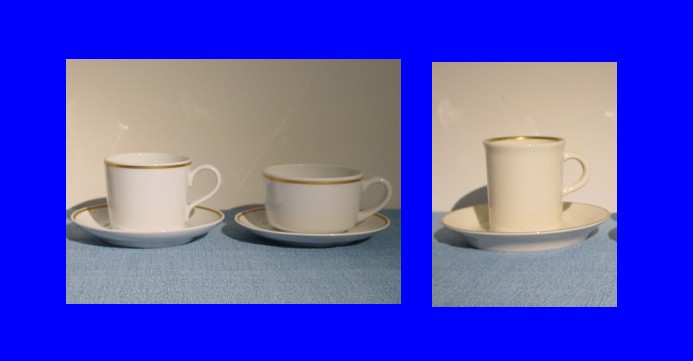
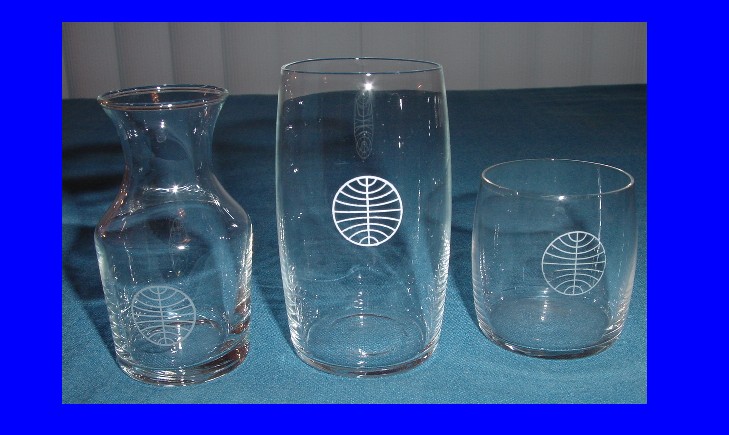
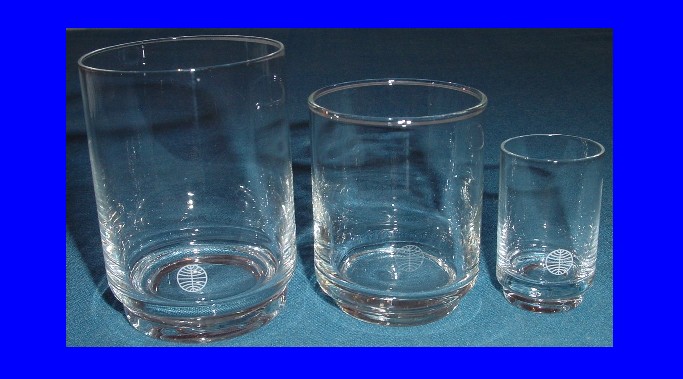
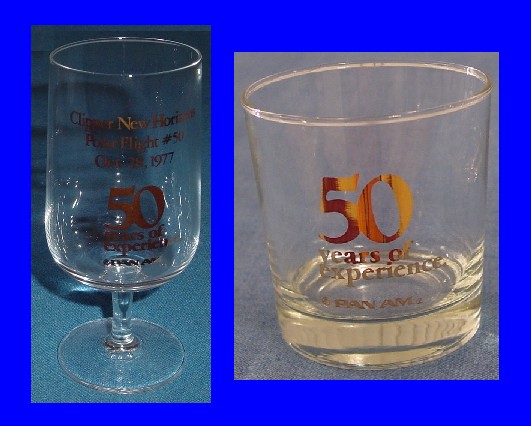
Below is a picture of the final Pan Am wine / champagne glass. The glass on the left was used in the 1970s and has the logo at the bottom. Pan Am would continue to use this glass until the end but by 1980 the logo had been moved up higher, which can be seen on the glass to the right.




Below on the left a flight attendant pours coffee in the upper deck dinning room of the 747SP from the 1970s era silver plate coffee pot. To my knowledge this pot only came in one size. The flight attendant is pouring into the taller Noritake cup shown above. To the right are the coffee pot, sugar bowl & creamer. All three pieces were produced by the Grand Silver Company. They are sitting on the 1960s era silver serving tray that carried over into the 1970s as seen in the photo. Note also the ashtray on the table next to the flowers. More information on Pan Am ashtrays is given further down on this page.
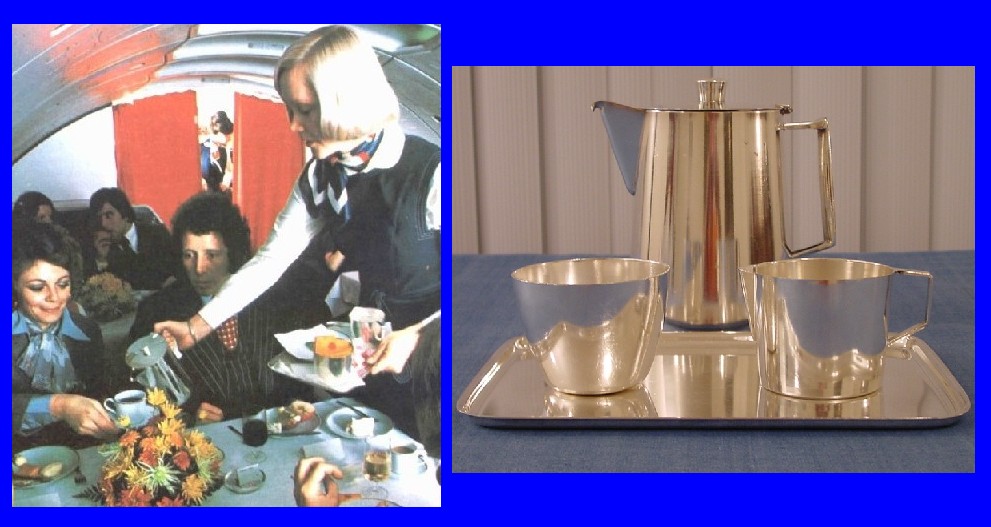
Below two flight attendants prepare a tray of coffee cups in the upper deck galley of a 747-100. The cups in this picture are the lower wider shape from the gold rim pattern. The ladies are pouring from an open top stainless steal pitcher that Pan Am introduced in the 1970s and continued to use for coffee / tea / water & juice until the company shut down in 1991.

In 1980 Pan Am introduced a "Business" class of service. This new service was called Clipper Class. The meal service was less elaborate than first class and rather than serving from carts meals were served on trays. In lieu of the plastic ware used on economy trays Pan Am opted to use it's first class china for business class. Seen below are customers enjoying Pan Am's Clipper Class service on the gold rim pattern plates.
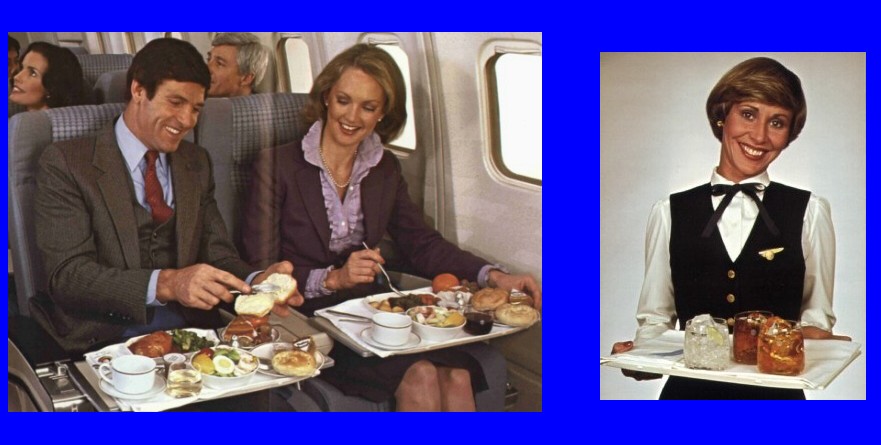
In 1979 Pan Am offered a special promotion whereby First Class customers were given a special commemorative plate depicting historically significant Pan Am aircraft with a description on the back of the plate. Below are the plates in the series. In the upper left position is the Ford Trimoter. Upper right is the Sikorsky S-38 small flying boat. In the center left position is the Sikorsky S-42. This was the first flying boat with significant flight range and was used extensively by Pan Am for exploratory flights in preparation for launching their Trans-Pacific service in 1935 with the Martin Aircraft M-130 which is seen in the center right position. In the bottom row on the left is the original version of the Lockheed Constellation. This aircraft joined Pan Am just after WWII and was the aircraft used on the first "Round The World" flight. The round the World Service was operated by Pan Am daily in both directions from 1946 until the early 1980s (approximately 1983). In the bottom right position is the Boeing B377 "Stratocruiser" which joined Pan Am's fleet in 1949. This double deck aircraft with its lower level lounge was considered the world's most luxurious aircraft until the jets came along in 1958.
To assist customers in understanding the type of aircraft being given to them Pan Am had the plate manufacturer place a brief description of the aircraft on the back of the plate along with the manufacturer's markings. To my knowledge these commemorative plates were produced by both Noritake and Bauscher. Shown below is the Bauscher version of the back of the Ford Tri-moter plate.
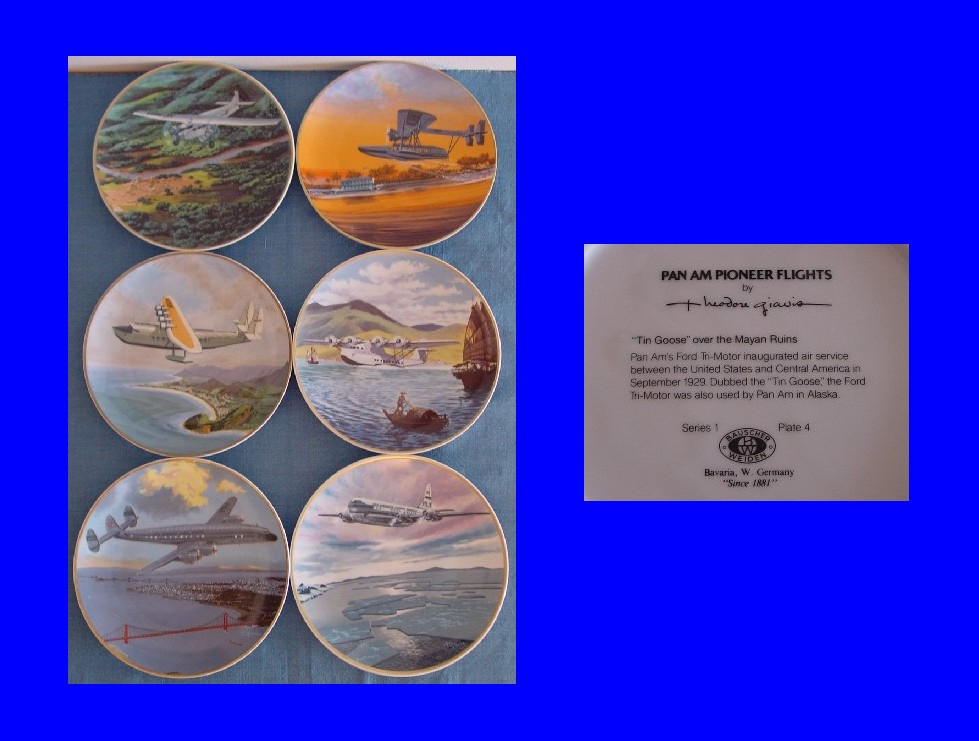
When Pan Am first introduced the 747 in 1970 flight attendants continued to walk Economy meal trays from the galley to customer seats. Starting in 1976 with the introduction of the 747SP Pan Am began to retrofit the 747 fleet with Economy class meal trays. The picture below shows the economy meal cart used from 1976 through 1991. Following are pictures of meal trays in use from the early 1970s through the mid 1980s. At the bottom of this set are close-up samples of the white plastic Economy tray pieces.

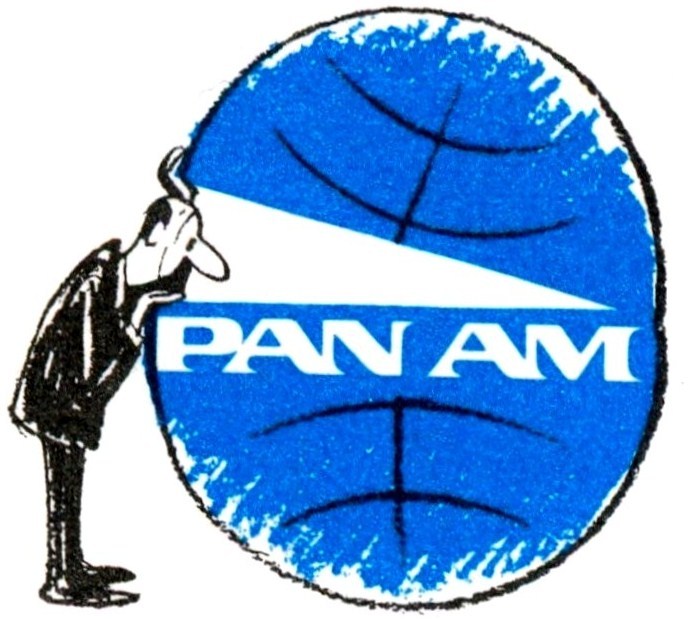
everythingPanAm.com
The Virtual Pan Am Museum
